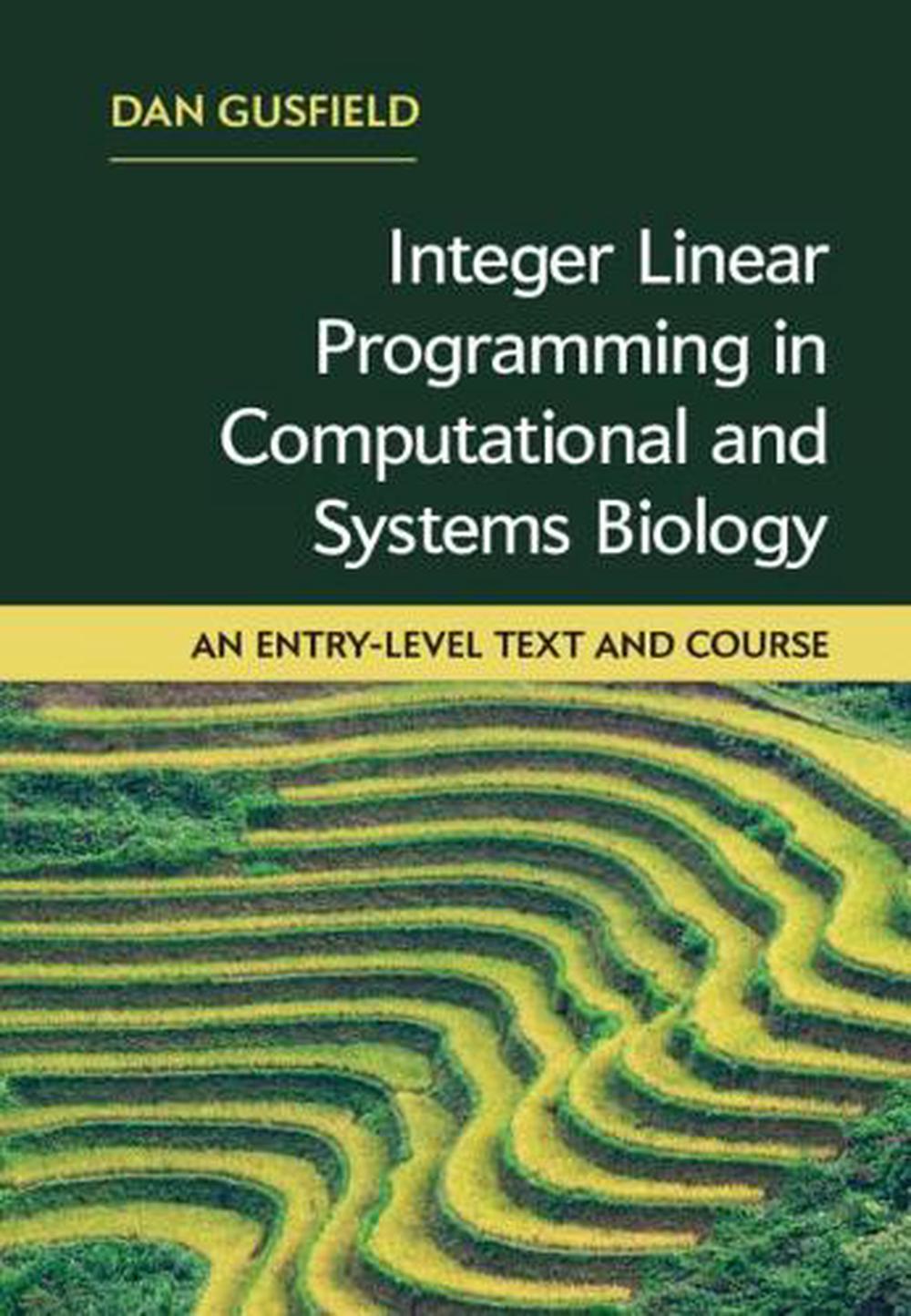
When you click on links to various merchants on this site and make a purchase, this can result in this site earning a commission. Affiliate programs and affiliations include, but are not limited to, the eBay Partner Network.
Integer Linear Programming in Computational and Systems Biology: An Entry-Level

- Item No : 156977539365
- Condition : Brand New
- Brand : No brand Info
- Seller : the_nile
- Current Bid : US $99.38
-
* Item Description
-
The Nile on eBay

Integer Linear Programming in Computational and Systems Biology
by Dan Gusfield
Integer linear programming is a versatile modeling and optimization technique with potential to transform biological computation. This hands-on text, designed for students, researchers, and professionals in both biology and computational fields, demonstrates applications in genomics, RNA and protein folding, DNA sequencing, phylogenetics, and more.
FORMAT
HardcoverLANGUAGE
EnglishCONDITION
Brand New
Publisher Description
Integer linear programming (ILP) is a versatile modeling and optimization technique that is increasingly used in non-traditional ways in biology, with the potential to transform biological computation. However, few biologists know about it. This how-to and why-do text introduces ILP through the lens of computational and systems biology. It uses in-depth examples from genomics, phylogenetics, RNA, protein folding, network analysis, cancer, ecology, co-evolution, DNA sequencing, sequence analysis, pedigree and sibling inference, haplotyping, and more, to establish the power of ILP. This book aims to teach the logic of modeling and solving problems with ILP, and to teach the practical 'work flow' involved in using ILP in biology. Written for a wide audience, with no biological or computational prerequisites, this book is appropriate for entry-level and advanced courses aimed at biological and computational students, and as a source for specialists. Numerous exercises and accompanying software (in Python and Perl) demonstrate the concepts.
Table of Contents
Preface; Part I: 1. A fly-over introduction; 2. Biological networks and graphs; 3. Character compatibility; 4. Near-cliques; 5. Parsimony in phylogenetics; 6. RNA folding; 7. Protein problems; 8. Tanglegrams; 9. TSP in genomics; 10. Molecular sequence analysis; 11. Metabolic networks and engineering; 12. ILP idioms; Part II: 13. Communities and cuts; 14. Corrupted data and extensions in phylogenetics; 15. More tanglegrams and trees; 16. Return to Steiner-trees; 17. Exploiting protein networks; 18. More strings and sequences; 19. Max-likelihood pedigrees; 20. Haplotyping; 21. Extended exercises; 22. What's next?; Epilogue: opinionated comments.
Review
'In his classic accessible teaching style, Gusfield teaches us why integer linear programming (ILP) is the most useful mathematical idea you've probably never heard of. Read this book to learn how what you don't know can hurt you, and why ILP should be your new favorite method.' Trey Ideker, University of California, San Diego
'Once again, Dan Gusfield has written an accessible book that shows that algorithmic rigor need not be sacrificed when solving real-world problems. He explains integer linear programming in the context of real-world biology. In doing so, the reader has an enriched understanding of both algorithmic details and the challenges in modern biology.' Russ Altman, Stanford University, CaliforniaPromotional
This hands-on tutorial text for non-experts demonstrates biological applications of a versatile modeling and optimization technique.
Review Quote
Advance praise: 'In his classic accessible teaching style, Gusfield teaches us why integer linear programming (ILP) is the most useful mathematical idea you've probably never heard of. Read this book to learn how what you don't know can hurt you, and why ILP should be your new favorite method.' Trey Ideker, University of California, San Diego
Promotional "Headline"
This hands-on tutorial text for non-experts demonstrates biological applications of a versatile modeling and optimization technique.
Description for Bookstore
Integer linear programming is a versatile modeling and optimization technique with potential to transform biological computation. This hands-on text, designed for students, researchers, and professionals in both biology and computational fields, demonstrates applications in genomics, RNA and protein folding, DNA sequencing, phylogenetics, and more.
Description for Library
Integer linear programming is a versatile modeling and optimization technique with potential to transform biological computation. This hands-on text, designed for students, researchers, and professionals in both biology and computational fields, demonstrates applications in genomics, RNA and protein folding, DNA sequencing, phylogenetics, and more.
Details
ISBN1108421768Author Dan GusfieldPublisher Cambridge University PressYear 2019ISBN-10 1108421768ISBN-13 9781108421768Format HardcoverImprint Cambridge University PressSubtitle An Entry-Level Text and CoursePlace of Publication CambridgeCountry of Publication United KingdomAffiliation University of California, DavisDEWEY 570.285Pages 428Publication Date 2019-06-13Short Title Integer Linear Programming in Computational and Systems BiologyLanguage EnglishUK Release Date 2019-06-13AU Release Date 2019-06-13NZ Release Date 2019-06-13Illustrations Worked examples or Exercises; 123 Line drawings, black and whiteAlternative 9781108377737Audience Professional & Vocational


-
- The Lost Super Foods
- $ 37.00
- The Self-Sufficient Backyard
- $ 37.00
- A Navy Seals BUG IN GUIDE
- $ 39.00
- Childrens Books Phonics Lot 60
- $ 34.99
















